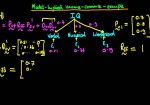What Is Depth Conversion and Why Is It Important in Geophysics?

Quick Answer
Depth conversion calculator is the process of transforming seismic data, which is recorded in two-way travel time, into depth measurements of the subsurface. It ensures geoscientists can accurately map geological structures, estimate reservoir thickness, and make better drilling decisions.
What Is Depth Conversion?
Seismic surveys record reflections of sound waves in time, measured as two-way travel time (TWT). While this is useful for identifying structures, drilling requires precise information in depth. Depth conversion bridges this gap by converting time-domain seismic data into depth-domain models.
This process relies on velocity models, which describe how fast seismic waves travel through different rock layers. The more accurate the velocity information, the more reliable the depth conversion.
Why Is Depth Conversion Important?
Depth conversion physics plays a critical role in exploration and production:
- Accurate well planning– Drilling in the wrong place due to depth uncertainty is costly. Conversion ensures the drill bit targets the reservoir.
- Reservoir characterisation– Understanding thickness, depth, and structure of reservoirs is vital for estimating hydrocarbons.
- Risk reduction– Conversion minimises structural misinterpretations that could lead to incorrect drilling locations.
- Integration of data– It links seismic surveys with well logs, core samples, and velocity check shots, providing a coherent subsurface model.
Methods of Depth Conversion
There are several approaches to converting time to depth, depending on available data and project complexity:
- Linear or constant velocity methods– Simplest approach, assuming uniform velocity, often used for preliminary studies.
- Layer-based methods– Uses interval velocities assigned to geological layers for more accurate modelling.
- Velocity models from well data– Incorporates well check shot surveys or vertical seismic profiles (VSPs) for calibration.
- Geostatistical or stochastic methods– Advanced approaches that integrate uncertainties and variations in velocity.
Common Challenges in Depth Conversion
- Velocity uncertainty– Small errors in velocity can cause large depth errors.
- Structural complexity– Faulted or folded geology requires more sophisticated modelling.
- Data limitations– Sparse well data can make calibration difficult.
- Anisotropy– Rocks may have different velocities depending on direction, complicating the conversion.
Best Practices for Reliable Depth Conversion
- Use well calibration wherever possible to tie seismic time to true depth.
- Build velocity models that incorporate geological knowledge rather than relying solely on mathematical fits.
- Apply uncertainty analysis to understand the possible depth range of structures.
- Regularly update models as new well and seismic data become available.
Applications Beyond Oil and Gas
While depth conversion is critical in hydrocarbon exploration, it also supports:
- Carbon capture and storage (CCS)projects
- Geothermal energydevelopment
- Engineering and construction(e.g., tunnelling, subsurface stability studies)
Depth conversion is a cornerstone of seismic interpretation, turning time-based images into actionable depth models. By integrating velocity data, well information and geological understanding, geoscientists can make informed drilling and reservoir decisions with reduced risk.
Whether in oil and gas, renewable energy, or civil engineering, depth conversion remains an essential process for transforming seismic data into real-world insight.














